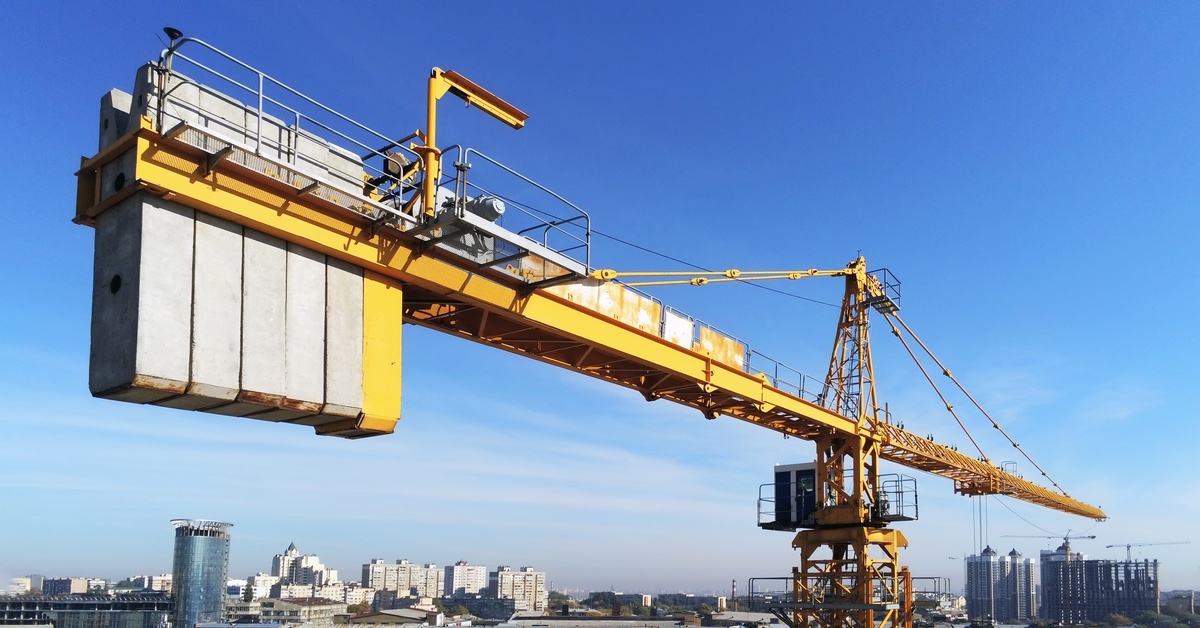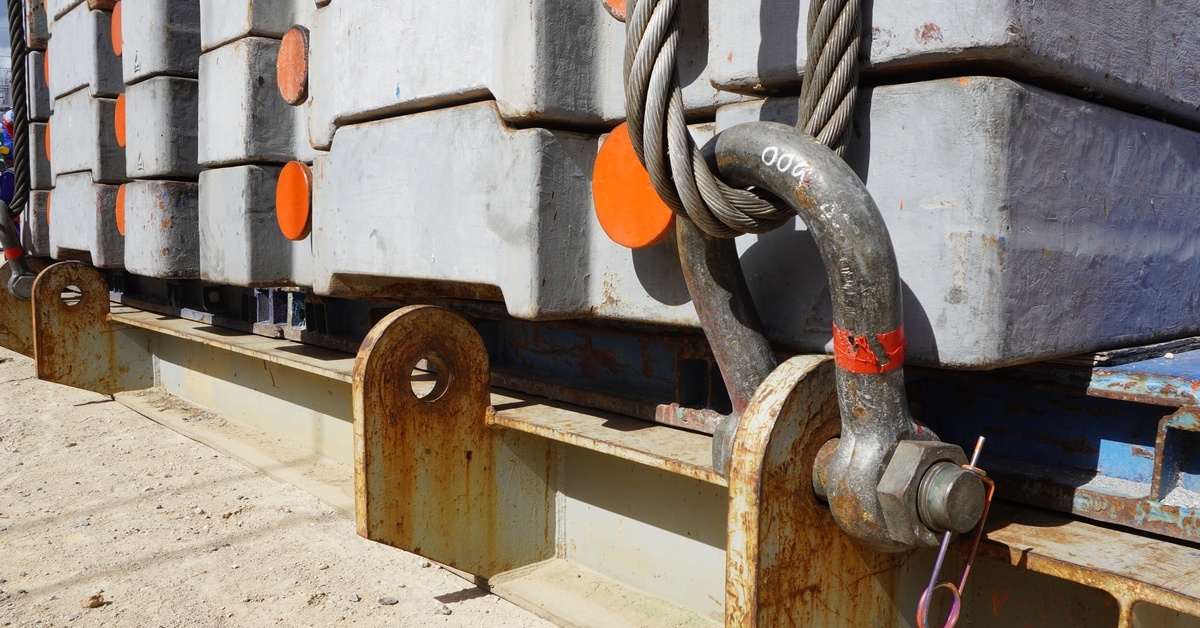The Role of Counterweights in Excavators and Cranes
Jul 9th 2025
Jul 9th 2025
Heavy machinery operators recognize that stable, balanced equipment is the difference between successful operations and catastrophic accidents. The role of counterweights in excavators and cranes in construction sites, mining operations, and industrial facilities is extremely important. These components transform potentially unstable giants into instruments of precision that can lift tremendous loads.
The engineering principles behind counterweight systems reveal sophisticated calculations that account for load dynamics, operational angles, and safety margins. Knowing how these systems work allows operators to maximize equipment performance while keeping the highest safety standards. Whether you operate compact excavators or massive tower cranes, counterweight knowledge directly impacts your operational success and worker safety.
Counterweights in excavators and cranes provide equilibrium to the machinery by offsetting the weight of lifted loads and extended booms. Engineers design the systems using precise mathematical calculations that take into account the equipment’s center of gravity, maximum lifting capacity, and operational range. The counterweight must generate enough opposing force to prevent the machine from tipping forward during lifting operations.
The physics behind counterweight systems relies on lever principles and torque calculations. When an excavator extends its boom to lift a heavy load, the combined weight creates a forward-tipping moment.
The counterweight positioned at the rear of the machine generates an opposing moment that maintains stability. This delicate balance allows operators to work confidently at maximum reach and capacity.
Manufacturers select counterweight materials based on durability requirements, environmental conditions, and space constraints within the equipment design. High-density concrete, steel castings, and composite materials are some of the advanced items that optimize weight distribution.

Excavators use rear-mounted counterweights that serve multiple functions beyond basic stability. The counterweights contain components including the engine, hydraulic systems, and fuel tanks. This combination creates an efficient use of space while contributing to the overall balance equation.
Upper frame counterweights rotate with the excavator house, keeping consistent balance regardless of the machine’s orientation. This rotation capability allows operators to work effectively in any direction without compromising stability. The counterweight remains aligned with the boom and stick assembly, giving continuous stabilization throughout the operational cycle.
Track-mounted excavators distribute additional weight through their undercarriage systems. The track frames and drive components contribute to overall stability while providing the mobility required for construction operations. Rubber tracks offer different weight characteristics compared to steel tracks, requiring specific adjustments to the counterweight to maintain optimal balance.
Compact excavators present unique counterweight challenges due to size and weight restrictions. Manufacturers must achieve adequate stability within strict dimensional limits imposed by transportation regulations and job site access requirements. Advanced counterweight designs incorporate removable sections that enable operators to adjust weight distribution according to specific applications.
Tower cranes employ massive counterweight systems that dwarf those found on excavators. These counterweights often weigh several tons and require careful installation using specialized equipment. The counterweight installation process requires precise coordination among crane operators, riggers, and site supervisors to guarantee a safe assembly.
Mobile cranes use adjustable counterweight systems that allow for modification based on lifting requirements. Removable counterweight blocks enable operators to choose the crane configuration for specific jobs while adhering to transportation weight limits. This flexibility gives significant operational advantages across diverse construction applications.
Crawler cranes combine track-mounted mobility with extensive counterweight systems, providing better stability and maneuverability. The body counterweight works in conjunction with removable blocks to achieve maximum lifting capacity. Operators can add or remove counterweight sections based on the specific lifting chart requirements for each operation.
All-terrain cranes combine counterweight systems with sophisticated suspension designs that maintain stability during travel operations. For example, the counterweight must remain secure during highway transportation while providing quick deployment capabilities at job sites. Advanced hydraulic systems allow for rapid counterweight positioning without the need for additional equipment.
Safety standards govern design, installation, and maintenance procedures across all heavy equipment categories. Regulatory agencies establish minimum counterweight requirements based on equipment capacity, operational parameters, and industry safety records. Compliance with these standards guarantees consistent safety performance across different manufacturers and models.
Inspection protocols must have regular counterweight examinations to identify wear, damage, or structural defects. Qualified technicians must verify counterweight attachment points, check supporting structures, and confirm proper weight distribution. Documentation requirements mandate detailed inspection records that track the condition of counterweights over the equipment’s operational life.
Operational safety procedures emphasize the proper configuration of counterweights before commencing lifting operations. Operators must verify the installation of counterweights, confirm capacity ratings, and validate compliance with the load chart. Preoperational checks include visual inspections, attachment verification, and documentation review to prevent accidents caused by improper counterweight configuration.

Preventive maintenance programs extend the service life of counterweights while keeping them operating at peak performance.
Regular maintenance includes surface inspections, lubrication of attachment points, and reviews of structural integrity. Maintenance schedules coordinate counterweight service with overall equipment maintenance to reduce operational downtime.
Counterweight optimization involves analyzing operational patterns to determine ideal weight configurations for specific applications. Data analysis reveals opportunities to adjust counterweight distribution, modify operational procedures, or upgrade counterweight systems for improved efficiency. Performance monitoring identifies trends that indicate potential counterweight issues before they impact operations.
Replacement counterweights must meet original equipment specifications while integrating design improvements and material advances. Aftermarket counterweight options offer cost-effective alternatives that uphold safety standards and ensure the best operational performance. Quality aftermarket suppliers offer counterweight solutions that surpass the durability and performance characteristics of the original equipment.
Construction industry applications are the driver behind constant innovation in counterweight technology. The high demand for projects requires increased lifting capacity and safety features.
Modern construction techniques require equipment that can operate in confined spaces while keeping maximum lifting capabilities. Counterweight designs adapt to these evolving requirements by utilizing advanced materials and engineering solutions.
Mining operations subject counterweight systems to extreme conditions that test durability and performance limits. Harsh environments, continuous operation, and heavy loads demand counterweight systems that exceed standard construction equipment requirements. Specialized counterweight designs incorporate environmental protection, enhanced structural integrity, and extended service intervals.
Infrastructure projects require counterweight systems that support extended operational periods with minimal maintenance interruptions. Bridge construction, utility installations, and transportation projects demand reliable counterweight performance throughout extended project timelines. Advanced counterweight designs provide consistent performance under demanding operational conditions.
Investing in quality counterweight systems and implementing proper maintenance procedures yields dividends through enhanced productivity, reduced downtime, and improved safety performance.
Professional equipment suppliers with heavy equipment parts, such as Tractor Zone, offer comprehensive counterweight solutions to meet demanding operational requirements. Our extensive inventory includes original equipment counterweights, premium aftermarket alternatives, and specialized applications for unique operational needs. Our experienced technical team provides expert guidance for counterweight selection, installation, and maintenance procedures that maximize your equipment investment.